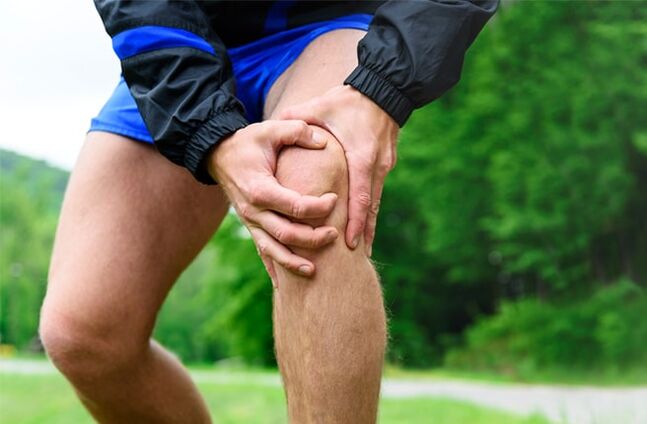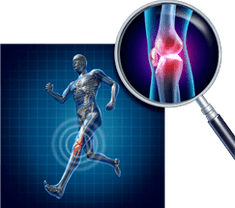Atthinia (osteoarthritia or deformation of osteoarthol (DOA) or deformation of arthritis)- The disease of the joints, in which the cartilage of the joints is affected in the early stages, then the muscles, joints, nerves, and bone tissue are included in the pathological process.
Arthritis is a disease that develops for various causes.These include metabolic disorders, injuries, poisoning, etc.
Patients usually call "arthritis" any joint disease in which pain, mobility restrictions and other unpleasant sensations in the area of one or more joints are observed, which is not always the case.Osteoarthritis and the pain associated with it develop as a result of "aging" of the joints due to the effects of various negative factors, however, the causes of articular pain can be both infection and injuries, and in these cases we are talking about other pathologies.
Statistics

Up to 70% of patients in the appointment of a general physician, therapist, neurologist, surgeon, rheumatologist complain about articular pain.Most of the time, it is pain in the lower back and area of large joints (knee, hip).Around the world, and especially in Russia, up to 70% of long -term impotence falls on osteoarthritis.There are several patients - up to 10% of those who consist of the doctor as a result of advanced articulation receive disability and need constant help.Arthritis is one of the leading reasons for a person's premature departure from a complete social life, in statistics is the second only in coronary heart disease.
The likelihood of article growth is increased by age: In people over 50 years, in 27% of cases, in older people over 70 years, prevalence is 97%, due to the load associated with the funding of the joints and the expiry of their normal operation.
Causes and development
The main factor in the development of articulation is the violation of the nutrition of the articular cartilage, which leads to its destruction.It is not so important, as a result of which this happens (high weight, professional sport, working characteristics, hormonal disorders, congenital common defects, etc.), the result is the same: the result: the result: the result:
- In the common cartilage, changes begin, which lead to loss of elasticity.In the thickness of the cartilage, microcosm appears.
- The supply of blood to the joint is disturbed, the production of the fluid joint decreases, the joint mechanics changes.
- Then all joint structures, adjacent muscles and nerve endings are involved.
The reported degenerative disorders lead to the development of arthritis symptoms and the disease "begins" when the fixed mechanical load becomes transcendent for the joint (or joints) and activates the processes of its destruction.
Symptoms

Unlike other common pathologies, article has been developing for many years, for a long time and subtle for humans.While the body marks the problem in the joint with severe pain, the pathological process in it has already begun.
Pain is the main symptom of the articular (osteoarthritia), in the early stages of pain that was not very expressed, weak, more comparable to the hassle.The unpleasant sensations in the joints occur after the load independently, without medical or pharmaceutical intervention, but quickly become tangible and limiting the usual human mobility.
The pain can occur at a rest or at the beginning of movement (the so -called "start"), for example, in the morning after bedtime or after a long session during the day in a position, when moving, passing.Article is also characterized by night rest, which also decreases rapidly with the principle of motor activity.Patients with joint problems usually say that in order to eliminate unpleasant sensations, they "knead the bones", "awakening the joints", which generally characterize this condition.
The pain occurs not only because of the disorders of the joint itself.When all the components of the joint, the muscles and nerve endings are involved in the process, the pain becomes different and painful: "shooting" along the nerve spreading along the muscle.The supply of blood to the joints, the nerves, the muscles are disturbed, the degenerative changes occur quickly in them.
Temporary or constant restrictions on joint mobility (consultants) develop due to severe pathological changes in articular and muscle tissues.For example, with hip joints, limb reduction, "oblique" of the pelvis and the curvature of the spine.
The joint crisis in the early stages is almost invisible, but as the disease develops when it moves, it becomes stable.This symptom concerns psychologically patients with arthritis even more than pain, as it indicates severe disorders, aging body and the musculoskeletal system in particular.
In the later stages of the articulation, the joint is deformed, which is associated with the loss of the curvature of all articular surfaces, bone increases, the decrease in the amount of joint fluid and the hypocritation of the joint.
Steps
Depending on the severity of the symptoms, various stages of the osteoartica are distinguished.

In the first stage, there are no resting pain and during a moderate load, they occur only after a high load (gym, weight transfer, running) or after a long static position.A person does not face restrictions and difficulties in movement.No drug treatment is required.
In the second stage of the pain, it is pronounced steadily, rapidly under the influence of provocative factors (prolonged walking, physical activity), not transmitted on their own.The patient is limited to motion, mobility of certain joints - knee, hip and others are strongly limited.Medical assistance is required, a therapeutic regimen must be prescribed, including drugs and non -pharmacies.
In the third stage, the patient is difficult to move, needs constant care, painful pain.As a rule, surgical treatment (intra -protective) and mass physiotherapy are essential for the restoration of quality of life.
Symptoms of osteoarthritis already occur at an early age and in this case it is necessary not to ignore them, but to consult a doctor.Timely prescription treatment will support the normal functioning of the joints and help to avoid rapid progress of the disease.






























